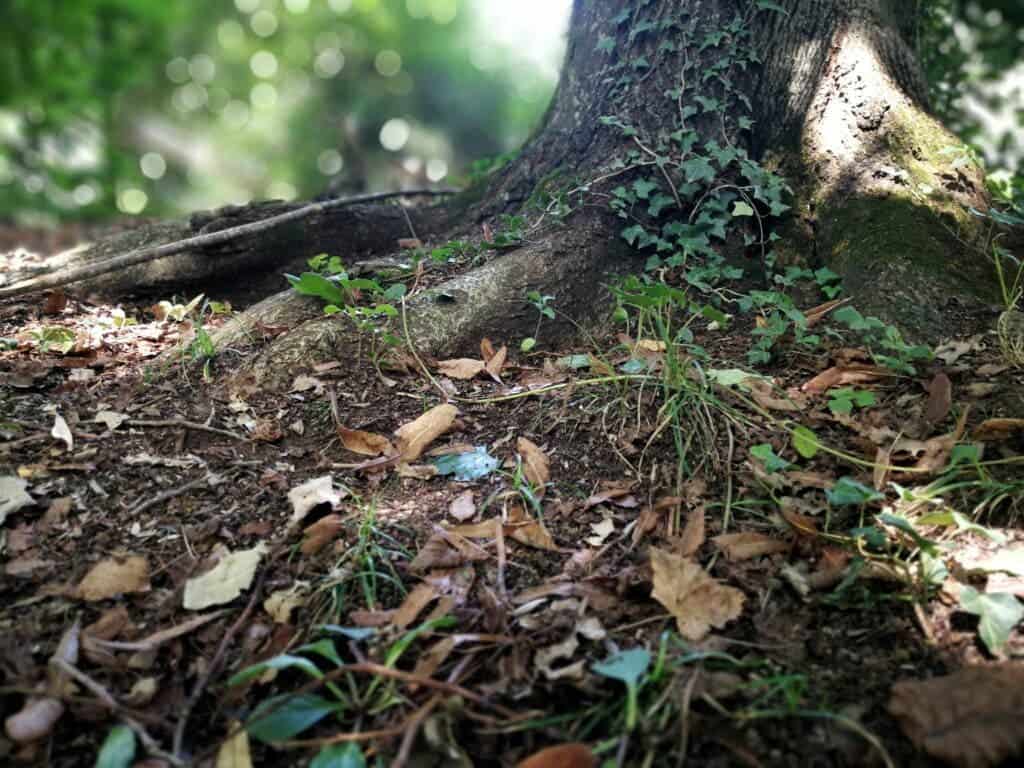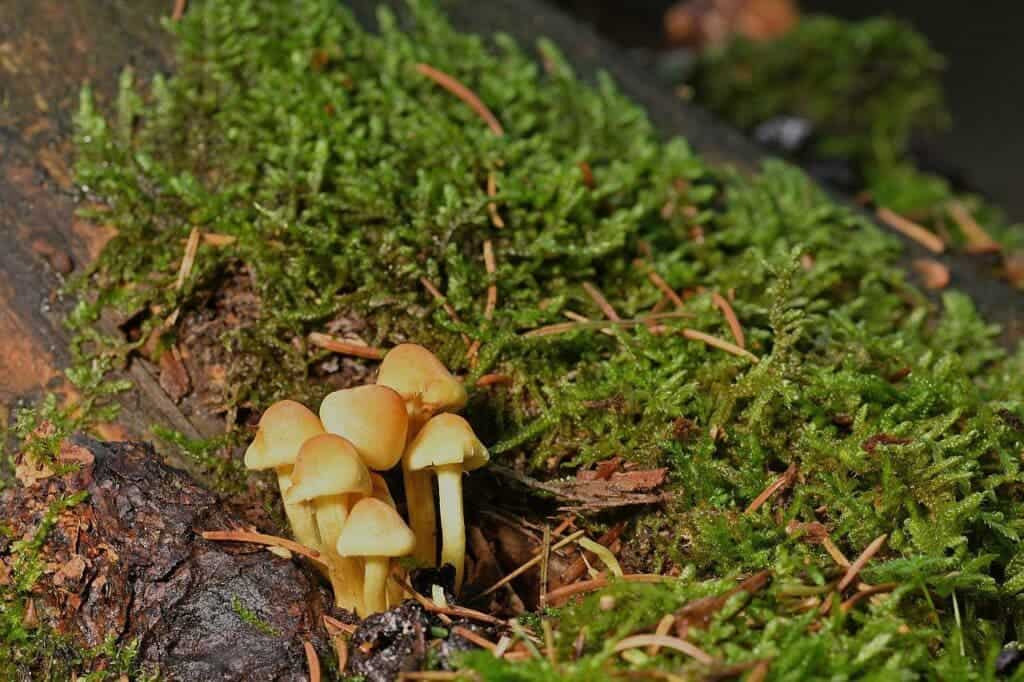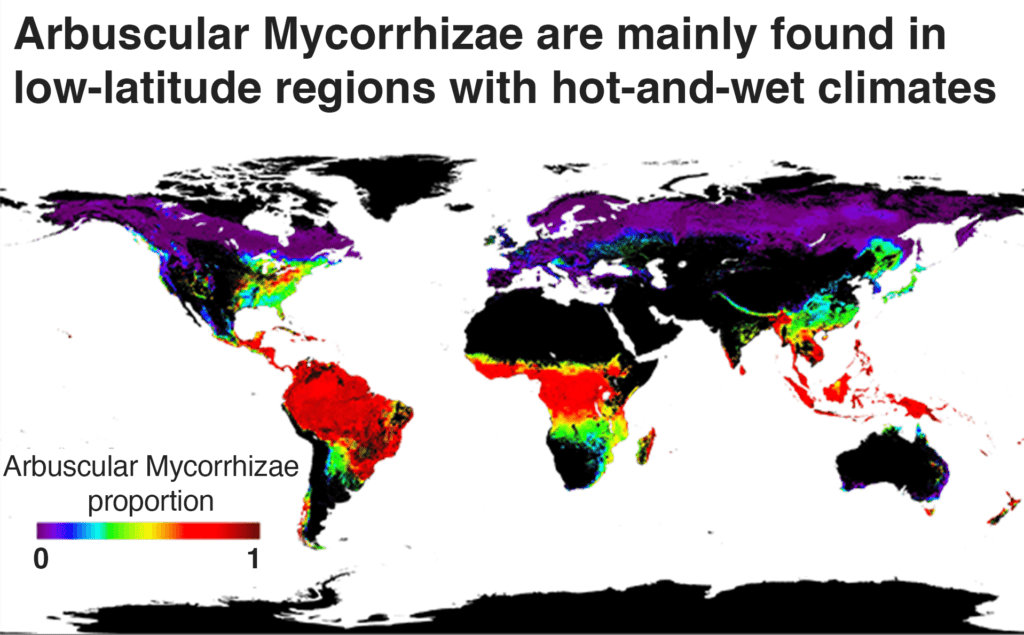Long before humans invented the internet, trees and plants hand-created their own web for communication between individuals and species. This may sound crazy, but there’s a lot of science to back this up. Trees and fungi are connected through a dizzyingly complex underground network. Welcome to the Wood Wide Web.

The wood wide web is a complex network of fungi and bacteria that connects trees together. First discovered in 1990 by forester Suzanne Simard, who dug deep into the world beneath our feet to study how plants exchange dialogue with each other. Simard identified something called a hub tree, or “mother tree”.
Mother trees are the largest or some of the largest trees in the forest and they act as hubs for the vast networks. A mother tree would, for instance, “infect” seedlings with helpful fungi and supply them with the nutrients they need to grow. The fungi and tree roots communicate and collaborate together in an intricate symbiotic relationship.
The hub is also used to move resources from one plant to the other. This is a particularly beneficial exchange between deciduous and coniferous trees as their energy deficits occur during different periods. Simard found that “fir trees were using the fungal web to trade nutrients with paper-bark birch trees over the course of the season”.
The wisdom of the woods
Until the 1990s, scientists didn’t think much about this connection. But by using isotopes to trace the resource progress from one plant to another, studies unveiled that these mycorrhizal associations (fungus-root) act as fiber cables that link multiple plants. Through this vast network, plants are able to exchange sugars, nutrients, and water.

Aside from resource sharing, plants make use of this association to send signals to other plants in instances when they are infested. This allows neighboring plants to raise their defenses and avoid the attack. This paints a picture that the network is complex with different plant and fungi species talking, trading, and even scheming attacks against each other.
In other words, it’s not just resources that the wood wide web is sharing — it’s also information. Just like, you know, the human web.
“I think about trees as individuals, as active decision-makers, communicating and exchanging materials, choosing one strategy over another,” said Sarah Batterman, first author of a study on the wood wide web published in 2018 and associate professor and Natural Environment Research Council Independent research fellow at the University of Leeds, UK.
Global microbe mapping
Since its discovery, the wood wide web has posed new questions about this subterranean social network that is nearly 500 million years old. Adding information to this growing research, Ecologist Thomas Crowther from ETH Zurich in Switzerland and Biologist Kabir Peay from Stanford University in Palo Alto, California attempted to map the forest’s underground ecosystem to better understand its implications.
Vast amounts of data on tree identification and measurement coming from government agencies and individual scientists across the globe were put together. This initiative gathered 1.2 million forest tree plots with 28,000 species from 70 countries.

There are two types of networks: arbuscular mycorrhizal networks and ectomycorrhizal networks, which operate between different types of plants and fungi. For example, oak and pine tree roots are surrounded by ectomycorrhizal (EM) fungi that build vast underground networks. On the other hand, maple and cedar trees prefer another type of microbe, the arbuscular mycorrhizae (AM), that burrow directly into trees’ root cells but for shorter linkages.
For the study, a computer algorithm was created to find correlations between AM, EM, and the trees from the database as well as the local physicochemical parameters. Results of the study showed that network-building EM fungi dominated the cooler regions (North America, Europe, and parts of Asia) where organic matter decays at a slow pace. On the contrary, the warmer tropical forests are ruled by AM fungi that tend to form smaller webs and do less inter-tree trade.
Researchers are now using other methods (like DNA and machine learning) to advance our understanding of this biological system.

Climate change at a microscopic level
With this new insight, scientists are getting a new perspective on the effects of climate change at the microscopic level. Results suggest that as the planet’s temperature continues to rise, about 10% of EM-associated trees could be replaced by AM-associated trees. And as these AM fungi churn carbon-containing organic matter faster, they could release more heat-trapping carbon dioxide quickly, thereby accelerating climate change at an unprecedented rate.
However, Charlie Koven, an Earth system scientist at the Lawrence Berkeley National Laboratory in California, argued that this argument is “a little bit more tenuous” as it is still not yet established how different soil fungi interact with carbon. He added that the prediction is less accurate since hard-to-measure metrics such as nutrient and gas loss from the soil could affect where different microbes live.

Some studies have even suggested that the wood wide web could make trees more resilient to climate change, but understanding the processes behind this is still a work in progress.
“Fungi are really important for woodland systems,” said UC Santa Barbara ecologist An Bui, the lead author of a study that appeared in the journal FEMS Microbiology Ecology in 2020. “But we don’t necessarily know how they will change with climate change.”
“It’s not just about temperature and rainfall, but also the organisms the trees and plants associate with,” she said. Soil fungi have a variety of relationships with woodland plants. Saprotrophic fungi, for instance, decompose dead organic matter, while pathotrophs eat live organic matter.

Despite the uncertainties, the wood wide web had certainly altered the way we look at trees and the forest. The forest is more than one meets the eye, its underground system links every tree orchestrating a harmonious superorganism.
With the first global microbe map, we’re starting to get a glimpse of how the underworld microbes control the ecosystem. These new insights help us in planning restoration efforts on wisely choosing what trees to plant in a certain area depending on their associated network. Lastly, since every tree is connected in a network, just imagine the severity of the result if we cut a single tree — let alone clearing the entire forest.



